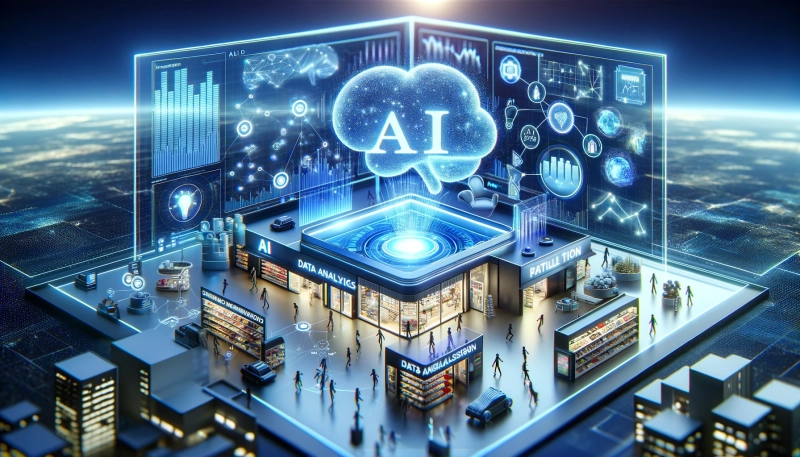Advancements in MM-LLMs
Recent advancements in MM-LLMs have been remarkable, with models like Lumiere demonstrating the ability to generate video content, a feat that extends the boundaries of what AI can achieve. These models are not just about understanding and generating text; they encompass the ability to interpret and produce content across different modalities, including images, audio, and video. This multimodal capability allows for a more comprehensive understanding of complex queries and enables the generation of rich, contextually relevant responses.
Focusing on Generalizability, Reliability, and Causality
The core focus areas of recent MM-LLM advancements—generalizability, reliability, and causality—are crucial for the practical application of AI. Generalizability refers to the model's ability to perform well across a wide range of tasks and contexts, not just those it has been specifically trained on. Reliability is about the consistency and dependability of the model's outputs, ensuring that users can trust the information and content generated by the AI. Causality involves understanding the cause-and-effect relationships within data, enabling the model to make predictions and generate content that reflects real-world dynamics more accurately.
Beyond GPT-4: The Emergence of Models Like Gemini
While GPT-4 marked a significant advancement in the field of AI, the emergence of models like Gemini represents a further evolution. These next-generation MM-LLMs are designed to be more polyvalent, capable of handling a broader array of tasks with higher reliability and a deeper understanding of causality. The shift towards such models indicates a move from purely textual or single-modality AI systems to more complex, integrated systems capable of multimodal understanding and content generation.
Implications for the Future of AI
The advancements in MM-LLMs, exemplified by models like Lumiere and Gemini, have profound implications for the future of AI. These models promise to revolutionize various sectors, including education, entertainment, healthcare, and more, by providing more nuanced, reliable, and contextually appropriate AI-generated content. Moreover, the focus on generalizability, reliability, and causality in these models points towards a future where AI can better understand and interact with the world in a way that mirrors human intelligence.
The development of MM-LLMs challenges us to reimagine the possibilities of AI, pushing the boundaries of creativity, productivity, and innovation. As these models become more integrated into our daily lives, they offer the potential to significantly enhance our interactions with technology, making AI a more integral and trusted part of our world.
In conclusion, the evolution of MM-LLMs represents a significant leap forward in the quest for more sophisticated, reliable, and versatile AI models. As we continue to explore the potential of models like Lumiere and Gemini, the future of AI looks brighter and more promising than ever, heralding a new era of technological advancement and human-machine collaboration. (source: zdnet)
Recent advancements in MM-LLMs have been remarkable, with models like Lumiere demonstrating the ability to generate video content, a feat that extends the boundaries of what AI can achieve. These models are not just about understanding and generating text; they encompass the ability to interpret and produce content across different modalities, including images, audio, and video. This multimodal capability allows for a more comprehensive understanding of complex queries and enables the generation of rich, contextually relevant responses.
Focusing on Generalizability, Reliability, and Causality
The core focus areas of recent MM-LLM advancements—generalizability, reliability, and causality—are crucial for the practical application of AI. Generalizability refers to the model's ability to perform well across a wide range of tasks and contexts, not just those it has been specifically trained on. Reliability is about the consistency and dependability of the model's outputs, ensuring that users can trust the information and content generated by the AI. Causality involves understanding the cause-and-effect relationships within data, enabling the model to make predictions and generate content that reflects real-world dynamics more accurately.
Beyond GPT-4: The Emergence of Models Like Gemini
While GPT-4 marked a significant advancement in the field of AI, the emergence of models like Gemini represents a further evolution. These next-generation MM-LLMs are designed to be more polyvalent, capable of handling a broader array of tasks with higher reliability and a deeper understanding of causality. The shift towards such models indicates a move from purely textual or single-modality AI systems to more complex, integrated systems capable of multimodal understanding and content generation.
Implications for the Future of AI
The advancements in MM-LLMs, exemplified by models like Lumiere and Gemini, have profound implications for the future of AI. These models promise to revolutionize various sectors, including education, entertainment, healthcare, and more, by providing more nuanced, reliable, and contextually appropriate AI-generated content. Moreover, the focus on generalizability, reliability, and causality in these models points towards a future where AI can better understand and interact with the world in a way that mirrors human intelligence.
The development of MM-LLMs challenges us to reimagine the possibilities of AI, pushing the boundaries of creativity, productivity, and innovation. As these models become more integrated into our daily lives, they offer the potential to significantly enhance our interactions with technology, making AI a more integral and trusted part of our world.
In conclusion, the evolution of MM-LLMs represents a significant leap forward in the quest for more sophisticated, reliable, and versatile AI models. As we continue to explore the potential of models like Lumiere and Gemini, the future of AI looks brighter and more promising than ever, heralding a new era of technological advancement and human-machine collaboration. (source: zdnet)





